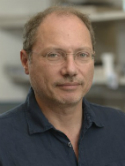Liver-derived signals sequentially reprogram myeloid enhancers to initiate and maintain Kupffer cell identity Journal Article
| Authors: | Sakai, M.; Troutman, T. D.; Seidman, J. S.; Ouyang, Z.; Spann, N. J.; Abe, Y.; Ego, K. M.; Bruni, C. M.; Deng, Z.; Schlachetzki, J. C. M.; Nott, A.; Bennett, H.; Chang, J.; Vu, B. T.; Pasillas, M. P.; Link, V. M.; Texari, L.; Heinz, S.; Thompson, B. M.; McDonald, J. G.; Geissmann, F.; Glass, C. K. |
| Article Title: | Liver-derived signals sequentially reprogram myeloid enhancers to initiate and maintain Kupffer cell identity |
| Abstract: | Tissue environment has an instructive role in establishing resident macrophage phenotypes. Sakai et al. provide evidence for a two-step model in which liver-derived signals that include DLL4, TGF-β, and desmosterol induce Kupffer cell (liver-resident macrophage) differentiation by regulating the expression and activities of RBPJ, SMADs, and LXRα. © 2019 Elsevier Inc. Tissue environment plays a powerful role in establishing and maintaining the distinct phenotypes of resident macrophages, but the underlying molecular mechanisms remain poorly understood. Here, we characterized transcriptomic and epigenetic changes in repopulating liver macrophages following acute Kupffer cell depletion as a means to infer signaling pathways and transcription factors that promote Kupffer cell differentiation. We obtained evidence that combinatorial interactions of the Notch ligand DLL4 and transforming growth factor-b (TGF-β) family ligands produced by sinusoidal endothelial cells and endogenous LXR ligands were required for the induction and maintenance of Kupffer cell identity. DLL4 regulation of the Notch transcriptional effector RBPJ activated poised enhancers to rapidly induce LXRα and other Kupffer cell lineage-determining factors. These factors in turn reprogrammed the repopulating liver macrophage enhancer landscape to converge on that of the original resident Kupffer cells. Collectively, these findings provide a framework for understanding how macrophage progenitor cells acquire tissue-specific phenotypes. © 2019 Elsevier Inc. |
| Journal Title: | Immunity |
| Volume: | 51 |
| Issue: | 4 |
| ISSN: | 1074-7613 |
| Publisher: | Cell Press |
| Date Published: | 2019-10-15 |
| Start Page: | 655 |
| End Page: | 670.e8 |
| Language: | English |
| DOI: | 10.1016/j.immuni.2019.09.002 |
| PUBMED: | 31587991 |
| PROVIDER: | scopus |
| PMCID: | PMC6800814 |
| DOI/URL: | |
| Notes: | Source: Scopus |
Altmetric
Citation Impact
BMJ Impact Analytics
Related MSK Work





